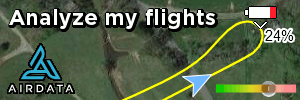The footage itself will matter as well. I recently overhauled my desktop PC after getting a GoPro Hero 7 Black. Between recording at 4k 60fps, and the fact that it only allows the use of the h.265/hevc codec, my old system (6th or 7th gen core I5 based) simply couldn't handle it.
I only entered the drone world on Monday (
Mavic 2 Pro) but some things to consider would be both the frame rate being used (although the
Mavic 2 tops out at 30fps, so probably not an issue) and the codec. If you can still record with h.264, your computer will be able to handle that much more easily as the compression of 265 is a LOT more (like, double.)
FWIW, my build is running a Ryzen 7 2700, 24 gigs of ram, a Quadro P2000, and storage ranges from the top end Samsung 970 Pro NVME drive, to slightly older Samsung 850 Pro SSDs, to a couple 3TB spinners for mass storage/archiving. That handles 4k60 pretty well in the editing phase with smooth playback at full res, even with some color grading/effects applied on the timeline. But even that is on the edge of what the hardware can handle. I started playing around at 24 and 30fps (convenient since I'll now be mixing in drone footage at one of those framerates) and it definitely helps make it all much more manageable.
4k 30fps, dlog, hevc output from the drone seems to work well too, despite the 10bit overhead being added as well.
But yeah, 4k footage is fun =)
edit: How toasty is the laptop getting? Or is the jitter apparent right from the get go? Laptops don't often have fantastic cooling, and both the CPU and GPU will throttle their clock speeds beyond a certain thermal threshold.









